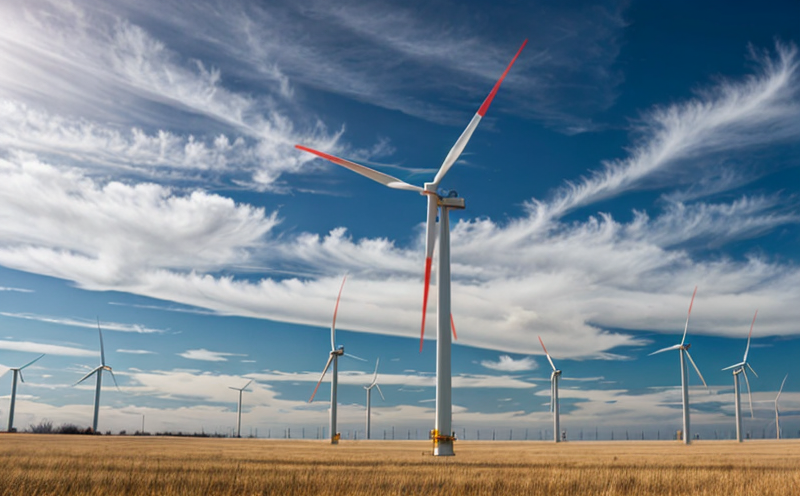Wind Energy Noise and Vibration Certification: A Comprehensive Guide
The development of wind energy has become a crucial aspect of the global effort to transition towards renewable energy sources. As the industry continues to grow, concerns regarding the impact of wind turbines on surrounding environments have also increased. One critical area of focus is noise and vibration certification, which aims to mitigate potential disturbances caused by these structures.
Noise pollution from wind farms can be attributed to two primary factors: sound generated by turbine blades during operation and vibrations produced by the machinery. These effects can lead to decreased quality of life for nearby residents, disturbance of wildlife habitats, and even increased maintenance costs due to equipment wear and tear. As a result, regulatory bodies have established standards for noise and vibration levels to ensure that wind energy installations are carried out responsibly.
Understanding Noise and Vibration Measurement
Noise measurement:
The International Organization for Standardization (ISO) defines sound pressure level in decibels (dB). Typical operating noise ranges from 40 dB to over 120 dB.
Various instruments, including sound level meters and octave band analyzers, are used to measure noise levels.
Vibration measurement:
Vibration is typically measured using accelerometers or velocity sensors attached to the turbine structure.
Acceleration (m/s²) and frequency response are critical factors in assessing vibration.
Certification Process
1. Design phase: Manufacturers must consider noise and vibration constraints when designing wind turbines, including structural modifications for optimal performance.
2. Testing phase: Wind turbines undergo thorough testing to ensure compliance with regulatory standards. This involves measuring sound pressure levels and vibrations during operation.
3. Acoustic modeling: Computer simulations may be used in conjunction with on-site measurements to validate predicted noise levels and predict potential disturbances.
QA Section
Q: What is the primary source of noise pollution from wind turbines?
A: The main contributor to noise pollution is sound generated by turbine blades during operation. However, vibrations also play a crucial role.
Q: How are noise levels measured in wind energy applications?
A: Sound pressure level (SPL) is typically expressed in decibels (dB). Various instruments, such as sound level meters and octave band analyzers, are used to measure SPL at the turbine site.
Q: What factors contribute to vibration in wind turbines?
A: Key factors include turbine design, bearing type, and operational conditions. Manufacturer recommendations should be followed for optimal performance and minimum disturbance.
Q: Can computer simulations be used to predict noise levels from wind turbines?
A: Yes, acoustic modeling software can be employed in conjunction with on-site measurements to validate predicted noise levels and assess potential disturbances.
Q: Are there any regulations governing noise and vibration standards in wind energy installations?
A: Various national and international organizations have established guidelines for acceptable noise and vibration limits. Examples include the ISO 9613-2 standard and the European Unions Environmental Noise Directive.
Q: How can wind turbine manufacturers ensure compliance with regulatory standards?
A: Manufacturers should consider design modifications to minimize noise and vibrations, followed by thorough testing to confirm compliance. Computer simulations may also be used as part of the certification process.
Q: What steps can be taken by wind farm operators to mitigate potential disturbances caused by their installations?
A: Operators should regularly monitor noise levels and vibrations, maintain equipment according to manufacturer guidelines, and implement corrective measures when necessary. Regular communication with nearby residents is also recommended.

































